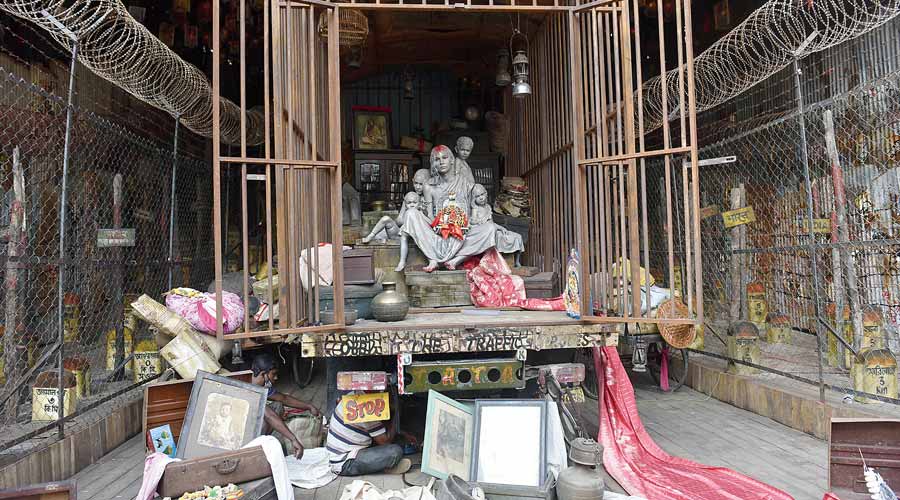A woman forced to leave home with her children and belongings is the centrepiece of a Puja.
Old trunks with household items, dusty portraits, barbed wires and milestones form the backdrop of the pandal.
Dangling from the ceiling are gloomy portraits of people, ration and voter cards and “D” cards, signifying “doubtful citizens”.
The “refugee family” embodies the fear surrounding the loss of citizenship, said the artist, who conceived and executed the theme of the puja of Barisha Club in its 33rd year.
“Losing citizenship is like an existential crisis. The Partition and its human tragedy are far from forgotten in Bengal. I have tried to recreate that sense of loss at a time people are afraid of losing everything all over again,” said Rintu Das, the architect of the puja.
Last year, Das had used the idol of a “migrant mother” as the goddess at the same Puja. The idol sculpted by Pallab Bhaumik was inspired by a painting by artist Bikash Bhattacharya.
The depiction, in the midst of the images of barefoot migrant workers walking hundreds of kilometres back home during the pandemic-induced lockdown, had taken the Internet by storm.
This year's theme is “Bhager Ma (Divided mother)”. A concept note at the entrance says a Durga idol worshipped by a 13th century king in undivided Bengal was brought from Dhaka to Calcutta along with millions of refugees in 1947.
“But why is the memory of Partition alive again? Why is the memory of leaving home alive again? Is the mother fearful of becoming a refugee again? Where will she go this time?” says the note.
The idol is seen inside a rusty cage. She holds on to her children and belongings and another miniature idol of the goddess which was brought to Calcutta from Dhaka. The fibre idols of the refugee mother and her family have been made by Debayan Pramanik, Pratap Majumdar and Sumit Biswas.
“Is the mother going to a detention camp? What is the future of countless other similar families? I am leaving that question for the viewers,” said Das.
The entire pandal, including the refugee idols, have a pale and monochromatic look. “I have deliberately avoided the use of bold colours to project an atmosphere of gloom,” said Das.
On two sides of the family are the “borders” of India and Bangladesh, manned by two tall watchtowers.
The concept has already generated significant traction on social media.
Chief minister Mamata Banerjee inaugurated the Puja on Thursday afternoon.
“As an artist, I cannot but respond to the happenings around me. The citizenship issue had triggered spontaneous protests everywhere. The pandemic halted the protests but the fear is still there,” said Das.
